 Ibrahim Hamato was 10 years old when he lost his arms in a train accident, despite that he has become a champion table tennis player and helped change the perception of disabled people in Egypt. Now aged 41 he has qualified for the Rio Paralympic Games, to be held from 7 to 18 September. Hoping to win a medal in Brazil, Hamato is training hard.
Ibrahim Hamato was 10 years old when he lost his arms in a train accident, despite that he has become a champion table tennis player and helped change the perception of disabled people in Egypt. Now aged 41 he has qualified for the Rio Paralympic Games, to be held from 7 to 18 September. Hoping to win a medal in Brazil, Hamato is training hard.
Tag: Egypt
-

Egypt: A champion prepares for the Paralympic games
-

Egypt Government Approves Five Oil And Gas Exploration Deals
 Egypt’s government has approved five oil and gas drilling and exploration agreements with foreign companies, Petroleum Minister Tarek El Molla said on Wednesday.
Egypt’s government has approved five oil and gas drilling and exploration agreements with foreign companies, Petroleum Minister Tarek El Molla said on Wednesday.Once an energy exporter, Egypt has turned into a net importer because of declining oil and gas production and increasing consumption. It is trying to speed up production at recent discoveries to fill its energy gap as soon as possible.
Four of the deals are offshore Mediterranean gas exploration and drilling agreements between Egypt’s state gas board EGAS and BP, Eni, Total, and Edison.
The fifth deal, which is an oil drilling deal in the Gulf of Suez, is between state petroleum board EGPC and local company Trident Petroleum.
Egypt currently produces about 3.9 billion cubic feet of gas per day and imports another 1-1.1 billion cubic feet per day.
-

UCLA Library to offer digital images of rare ancient manuscripts in Egypt
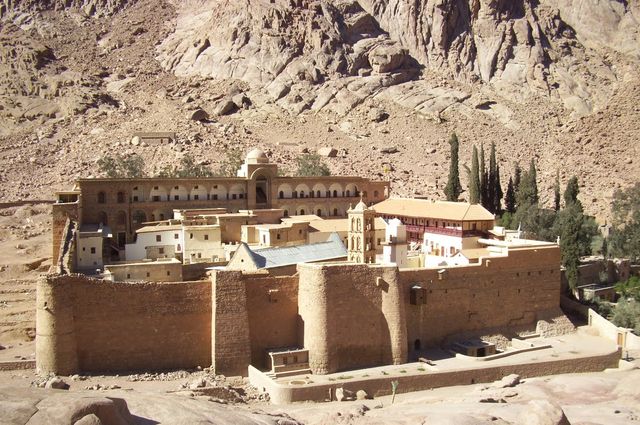 St. Catherine’s Monastery, a UNESCO World Heritage site that’s located on rugged terrain at the foot of Mount Sinai in Egypt, houses the oldest continually operating library in the world, containing ancient and medieval manuscripts second only to those held by the Vatican Library.
St. Catherine’s Monastery, a UNESCO World Heritage site that’s located on rugged terrain at the foot of Mount Sinai in Egypt, houses the oldest continually operating library in the world, containing ancient and medieval manuscripts second only to those held by the Vatican Library.These remarkable manuscripts, which delve into subjects ranging from history and philosophy to medicine and spirituality, were never easily accessed by scholars and students, who had to travel to this desert region, considered sacred to three world religions — Christianity, Islam and Judaism. Today, access is even more problematic given security concerns in the Middle East.
That will all be changing, thanks to a major grant from The Ahmanson Foundation to the UCLA Library. The grant will fund key aspects of the Sinai Library Digitization Project to create digital copies of some 1,100 rare and unique Syriac and Arabic manuscripts dating from the fourth to the 17th centuries. The three-year project is being initiated by the fathers of St. Catherine’s Monastery.
It’s being made possible through the participation of the UCLA Library and the Early Manuscripts Electronic Library (EMEL), a nonprofit research and service organization based in Southern California that uses digital technologies to make manuscripts and other historical source materials accessible to scholars and the public. It specializes in the design of systems to support fragile manuscripts during digitization and in the recovery of text from damaged, deteriorated or erased manuscripts.
“The manuscripts at St. Catherine’s are critical to our understanding of the history of the Middle East, and every effort must be made to digitally preserve them in this time of volatility,” said UCLA University Librarian Ginny Steel. “The Ahmanson Foundation’s visionary support honors the careful stewardship of St. Catherine’s Monastery over the centuries and ensures that these invaluable documents are not only accessible, but preserved in digital copies.”
“St. Catherine’s Monastery proposed a program to digitize its unparalleled manuscript collection, and an international team was assembled to help digitally preserve the ancient pages,” said Michael Phelps, EMEL director. “EMEL is collaborating with the monastery to install world-class digitization systems, and the UCLA Library will host the images online on behalf of the monastery.”
Among the monastery’s most important Syriac and Arabic manuscripts are a fifth century copy of the Gospels in Syriac, a literary language based on an eastern Aramaic dialect; a Syriac copy of the “Lives of Women Saints,” dated 779 A.D.; the Syriac version of the “Apology of Aristides,” of which the Greek original has been lost; and numerous Arabic manuscripts from the ninth and 10th centuries, when Middle Eastern Christians first began to use Arabic as a literary language.
Just as the 19th-century discovery at St. Catherine’s of the Codex Sinaiticus — the oldest complete Bible (345 A.D.) — spurred new theological scholarship, this project will enable scholars to gain new insights and pose new lines of inquiry, project leaders said.
“We are deeply grateful to The Ahmanson Foundation for its generous investment in this important project, and for its longstanding partnership with the UCLA Library,” Steel concluded.
As one of the world’s leading research libraries, the UCLA Library maintains a research collection of record, making its materials accessible to a broad audience of students, scholars, researchers, and the public. Last year, more than 20 million people accessed UCLA Library’s digital and online resources. By preserving global cultural heritage, the UCLA Library fuels the transfer of knowledge across generations and across the world.
-

Mohamed Ihab Wins Egypt’s Second Medal at Rio Olympics
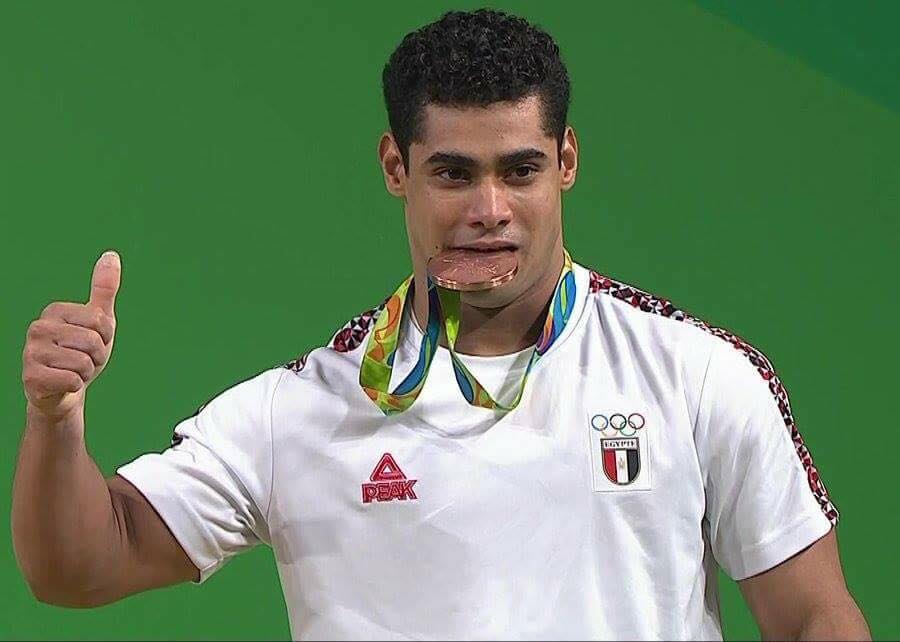 Egyptian weightlifter Mohamed Ihab won Egypt’s second medal at the 2016 Rio Olympics in the 77kg men’s weightlifting event.
Egyptian weightlifter Mohamed Ihab won Egypt’s second medal at the 2016 Rio Olympics in the 77kg men’s weightlifting event.Ihab, who managed to lift 361kg, came in third place, scoring Egypt’s second bronze medal of the day and of the Rio Olympics.
The Egyptian bronze medalist came third after Kazakhstan’s Nijat Rahimov and China’s Lu Xiaojun, who both lifted 379kg and set new world records.
The bronze medal is Egypt’s second of the day after weighlifter Sara Ahmed came in third place in the women’s 69kg event.
-
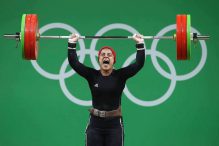
Sara Ahmed Achieves Egypt’s First Medal at the Olympics
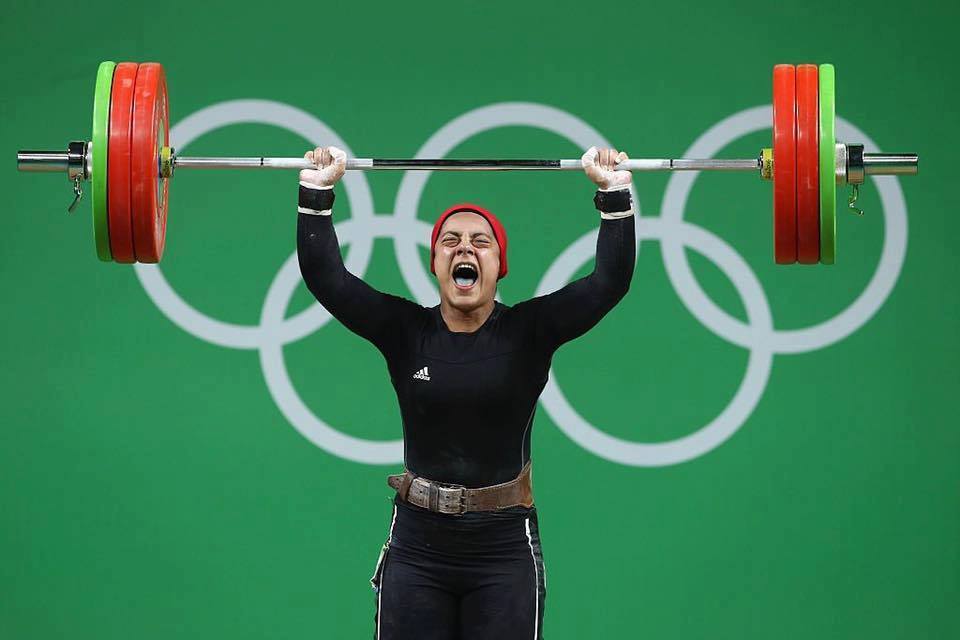 Egyptian weightlifter Sara Ahmed won Egypt’s first medal at the 2016 Rio Olympics after finishing in third place in the women’s 69kg weightlifting event.
Egyptian weightlifter Sara Ahmed won Egypt’s first medal at the 2016 Rio Olympics after finishing in third place in the women’s 69kg weightlifting event.Sara, who managed to lift 255kg, also became the first Egyptian woman to win a medal during the Olympics.
The 18-year-old Egyptian weightlifter came third after Kazakhstan’s Zhazira Zhapparkul and China’s Xiang Yanmei, who came second and first respectively.
Sara’s achievement also marked Egypt’s first weightlifting Olympic medal since 1948, when Attia Hamouda won silver.
While this marks Egypt’s first medal at the 2016 Rio Olympics, Egypt has continued to impress many at home and overseas. Many of Egypt’s athletes have broken personal and continental records at the competition.
-
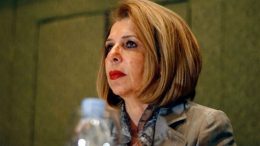
Egypt nominates Moushira Khattab for UNESCO director-general
 Egypt decided on Saturday to nominate former Minister of Family and Population Moushira Khattab for the position of director-general of the United Nations Education, Scientific, and Cultural Organisation (UNESCO).
Egypt decided on Saturday to nominate former Minister of Family and Population Moushira Khattab for the position of director-general of the United Nations Education, Scientific, and Cultural Organisation (UNESCO).The decision came after current director-general Irina Bokova announced candidacy for the UN secretary-general position. Citing officials, state-owned news agency MENA reported that Khattab has started visiting top officials from the UNESCO member states to secure their stances regarding her nomination.
Officials stated that the tour is secretive and far from media follow-ups. However, privately-owned newspaper Al-Youm Al-Sabaa reported that many member states have welcomed the decision and support Khattab’s nomination.
Rights lawyer Gamal Eid opposed the nomination, saying that he is not against Khattab’s nomination because she is secular, but rather because she is one of the prominent figures of the era of former president Hosni Mubarak.
The nomination of Khattab came one year after Egypt nominated Ahmed Aboul-Gheit to be secretary-general of the Arab League. Aboul-Gheit served as the Foreign Minister from 2004 to 2011, and his nomination marked a comeback for the prominent figures of the Mubarak era.
In 2014, founding director of Bibliotheca Alexandrina Ismael Serag El-Din was nominated for the UNESCO director-general position. Uproar amid intellectuals and activists also took place as Serag El-Din was a controversial nominee who was facing several charges in court. He was also a prominent figure of the Mubarak era.
In 2009, Egypt nominated former Minister of Culture Farouk Hosni to the post of director-general as well, but chances of his appointment declined after anti-semitic statements were made, saying that if there were any Israeli books in the Alexandria library, he would burn them. The comments sparked international concern over whether he would be appropriate for the position.
Activist Wael Abbas commented on the nomination of Hosni at the time, saying that he was a hypocrite and worked for a dictatorial regime. He also added that his ministry was involved in corruption.
Earlier in May, Qatar nominated cultural adviser to the Emir, Hamad Al-Kuwari, for the same post, which will level the competition, as both Khattab and Al-Kuwari will attempt to win the support of the seven Arab countries that vote in the UNESCO.
Khattab was the former Minister of Family and Population during the era of former Prime Minister Ahmed Shafiq in 2011. She also served as Egypt’s ambassador to South Africa, the Czech Republic, and Slovakia. She further served at Egypt’s diplomatic mission in Austria, Hungary, and the United Nations.
UNESCO is a specialised agency in the United Nations that aims to facilitate peace and security through fields such as education and natural sciences.
-
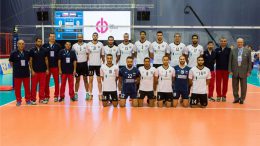
Egyptian volleyball team promises better results at Rio 2016
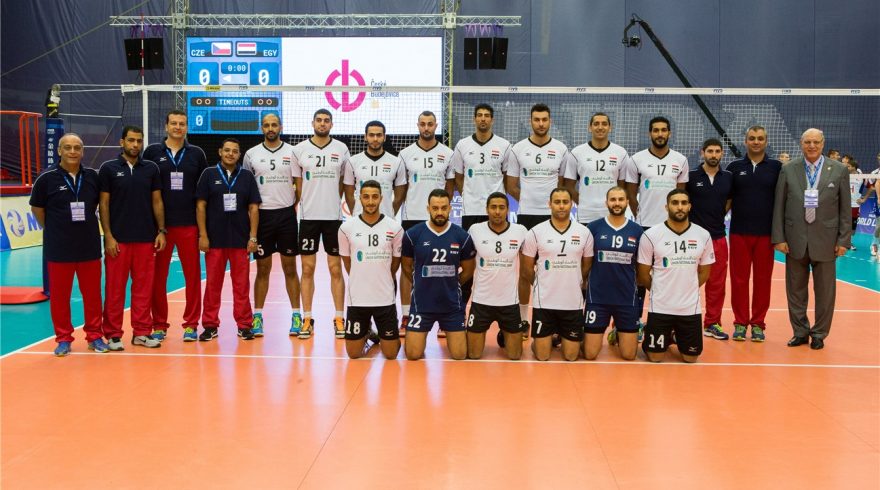 After a disappointing performance at the FIVB World League competition, the Egyptian men’s volleyball team has promised better results at the Rio 2016 Olympics next month.
After a disappointing performance at the FIVB World League competition, the Egyptian men’s volleyball team has promised better results at the Rio 2016 Olympics next month.The team won four matches and lost five in the competition. However, Sherif El-Shemerly and team captain Hossam Abdallah promised to do better moving forward, saying the team was not in its best shape at the World League.
According to Kingfut, the coach stated that three factors contributed to the team’s poor performance.
“First, Ahmed Afifi, who is a very important player, got injured. Second, our best player did not show his best in Korea. Third, four important players did not participate in this game,” said El-Shemerly. “We have only four weeks to prepare for the Rio Olympic Games. Although this is not enough time to solve the problems, we will decrease errors.”
Egypt qualified to the World League among the top 24 teams in the 2015 World League, in which Egypt placed 21st. The team started off with a promising win against the Czech Republic, followed by a loss versus Canada, a win against China, then a defeat from Finland.
Egypt also defeated Japan and Turkey, but lost its last three games to the Netherlands, South Korea and Czech Republic. This set Egypt in seventh place out of the 12 teams in Group 2, which was not enough for a spot in the finals that will include the top three teams in the group along with the host country.
Still, the Egyptian players left the competition on a good note, with three of them among the top 20 scorers out of 137 players in Group 2. Ahmed El-Kotb is currently not only the highest scoring player in Group 2 but in the entire league, with 188 points. Additionally, Captain Hossam Abdallah is the second best server in Group 2, fourth in the competition. He is also the fifth best setter in his group, while Ahmed Abdelaal is the third best digger.
As number 17 in the world and winner of seven African Championships, Egypt is the second highest-ranking African country after Tunisia, which is only one place ahead. Tunisia represented Africa in the World League alongside Egypt, while Qatar was one of seven Asian countries participating.
Qatar and Tunisia both competed in Group 3, where they ranked sixth and eighth, respectively. When the teams met, Qatar won 3-1.
Egypt booked its ticket to the Rio 2016 Olympic volleyball event after beating Tunisia in the final of the men’s African Qualification Tournament that took place in Congo. Tunisia gave another shot at an Olympic berth in the second World Qualifier in Mexico, but failed to seize it after finishing in third place. Nevertheless, the Tunisians are eight-time African champions and have participated in six volleyball Olympic events.
The Egyptians are hoping to improve their performance in Rio 2016.
“Congratulations to the Czech Republic. I think we played a full five-set match with Korea yesterday and the players felt tired. That is why we could not play well today,” said Abdullah, following the defeat against Czech Republic. “We are going to recover and show a good performance at the Rio Olympic Games.”
Egypt will play against Poland on Aug. 7, Cuba on Aug. 10, Russia on the Aug. 11, Iran on Aug. 13 and Argentina on Aug. 15. It will proceed to the quarter finals if it ranks in the top four out of the six teams in its pool. This will be Egypt’s fifth Olympic volleyball participation, with a best finish of tenth place in Los Angeles 1984, when Tunisia ranked ninth.
On the other hand, Qatar will make its Olympic volleyball debut this year at the beach volleyball event, to which Tunisia and Egypt are heading as well.
-

4,200-Year-Old Egyptian Temple Discovered to Have Remarkably Well Preserved Artwork
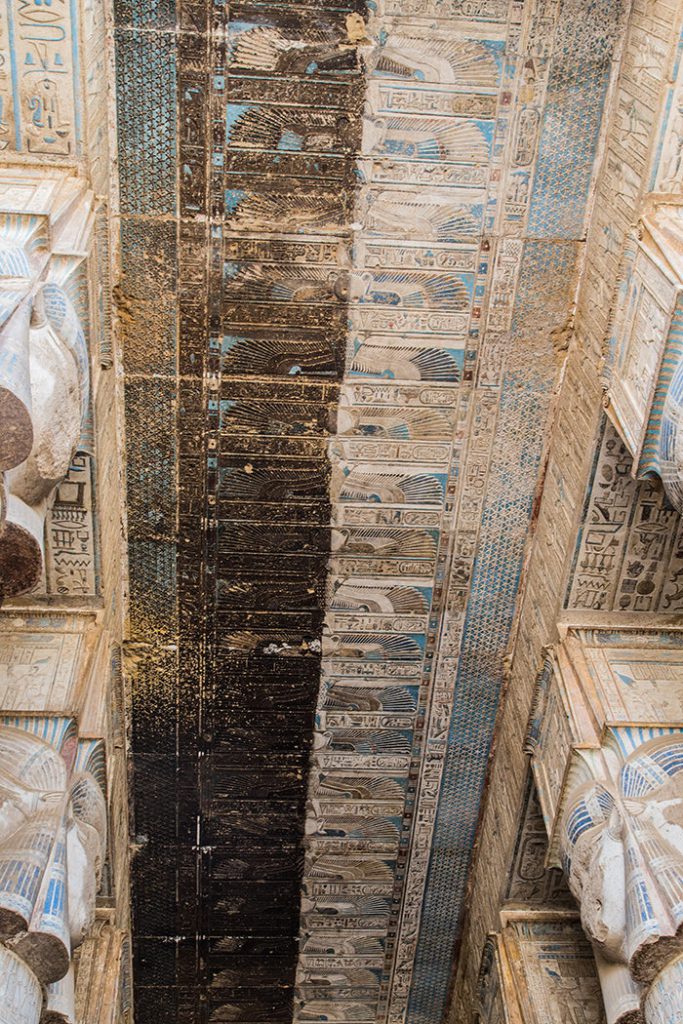 Scattered throughout modern Egypt are many ancient temples which are famous for their splendor and historical significance. The perfect example of one of these breathtaking displays of luxury is the Temple of Hathor. Built around 2250 BC, the artwork that runs throughout the building is remarkably well kept, despite being thousands and thousands of years old. As the main temple within the significant Dendera Temple complex, it is known for being one of the best-preserved sites in all of Egypt.
Scattered throughout modern Egypt are many ancient temples which are famous for their splendor and historical significance. The perfect example of one of these breathtaking displays of luxury is the Temple of Hathor. Built around 2250 BC, the artwork that runs throughout the building is remarkably well kept, despite being thousands and thousands of years old. As the main temple within the significant Dendera Temple complex, it is known for being one of the best-preserved sites in all of Egypt.Facing the Nile, the sanctuary layout is classical Egyptian, containing stunning examples of Ptolemaic Egyptian artwork including depictions of Cleopatra and her son, fathered by Julius Caesar. The temple itself was built to worship the Ancient Egyptian goddess Hathor, who personified feminine love, healing, and motherhood. Imposing columns have been carved to bear the face of the goddess, complete with the cow horns she is typically shown to bear.
Though the entire temple is magnificent, it is the ceiling that remains the true masterpiece. Recently, workers carefully removed hundreds of years of black soot which accumulated as a centuries-old Arab village established camp within the temple. Through the restoration, a spectacular and vibrant painting overhead was slowly revealed. Decorated with a complex astrological chart of the heavens and zodiac signs, the ancient temple ceiling now offers a highly detailed setting to study or just a lovely scene to visit and be swept away by the antiquated opulence.
-
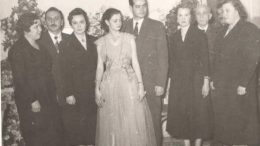
The Aleksandrinke: Slovenians in Egypt
 In a previous interview with Daily News Egypt, Slovenian ambassador to Egypt Tanja Miskova told the story of the Slovenians who migrated to Egypt in the 20th century in the face of the myriad of wars that plagued the former Yugoslavian countries at the time. To settle in Alexandria, where many of the migrants started to rebuild their lives, was to find a place with a better standard of living and new economic opportunities.
In a previous interview with Daily News Egypt, Slovenian ambassador to Egypt Tanja Miskova told the story of the Slovenians who migrated to Egypt in the 20th century in the face of the myriad of wars that plagued the former Yugoslavian countries at the time. To settle in Alexandria, where many of the migrants started to rebuild their lives, was to find a place with a better standard of living and new economic opportunities.The people of the Slovene region had seen their territory come under Italian rule after World War I, followed by an intense process of italianisation under fascism. When they immigrated to Egypt, many of the Slovenian women found employment as domestic workers in the households of Alexandrian-Italian families, with whom they shared a linguistic commonality. Notable Egyptian statesman and former UN secretary-general Boutres Boutres-Ghali was nursed by a Slovenian woman named Mijlena.
Most Slovenian men who came to Egypt, at the time, worked as electricians.
This vibrant and important aspect of Alexandria’s history, with its influx of Slovenian immigrants, produced a phenomenon known as Aleksandrinke.
The Slovenian Embassy in Egypt, with the collaboration of the ambassador and her assistant Christian Samir, facilitated the following interview with the granddaughter of a Slovenia woman who found herself in Alexandria in the middle of the 20th century. What follows is an abridged version of a conversation with Salwa Hegazy and her daughter, Amira. Salwa’s grandmother left Slovenia in the interwar period and arrived in Alexandria in 1932. Hegazy has established a social club for the descendents of Slovenian immigrants in Egypt.
How did your grandmother come to Egypt?
Salwa Hegazy: My grandmother was from Nova Gorica, located in western Slovenia on the border with Italy. She was born in the city of Bilje. Her family had a farm and they were kind of well off. My grandmother was married and had a daughter, but unfortunately all the men of the family were drafted by the Italian army as there were many wars. There were no men to help the family in their work on the farm. Moreover, the situation was not safe. So, around 1932, my grandmother, her mother, her sister and her daughter travelled to Trieste, in Italy. From there, they took a boat and came to Alexandria. At the time, Alexandria was full of foreigners including a large number of Italians. Also, the Slovenian community there was quite large as they had started heading to Egypt around 1800.
My grandmother’s sister found a job as a receptionist in a hotel called Cecil because she spoke more than one language including Italian and German. I am not sure if my grandmother also worked there or not, as her daughter was only five years old.
Is the Aleksandrinke phenomenon known in Slovenia?
Amira: my teacher [referring to the teacher who taught her Slovenian in a summer camp in Slovenia], which was also from Nova Gorica, knew about this phenomenon and asked me to send her some stuff regarding this phenomenon as her students study it.
SH: When I was visiting my grandmother’s city, I read an announcement by chance about making a march of solidarity that would be similar to that which my grandmother along with other Slovenians made to Trieste, from which they took boats to emigrate to cities all over the world. It was a nice surprise that they still remembered my grandmother’s people and still were making something for them.
How did Slovenians preserve their culture in the face of conflict?
SH: I recall a past incident when Slovenians tried to print Slovenian-language books [during World War II]. To this end, they wanted to establish a printing house faced with Germans [who controlled parts of the Slovenian territory at the time] who eventually eliminated 25% of the Slovenian cultural and education elite. To get around German control, Slovenians resorted to smuggling their books in barrels of wine, to allow people to read them, to preserve their identity and language. As you can tell, Slovenians spent their lives fighting to preserve their language and identity.
As far as I know, Egypt’s relation with the former Republic of Yugoslavia was very good, especially with former Yugoslavian president Josip Broz Tito. What about the presence of Abdel Nasser in Slovenia?
SH: When I went to Villa Bled in Slovenia, visited by Abdel Nasser, they still preserve a photo of him with Tito. I took a photo of it. Despite this strong relation, it is sad that people here now barely know about Yugoslavia. Moreover, they do not know about its separated countries. I remember when I went to present the papers regarding the Slovenian Club in Egypt at the Ministry of Social Solidarity, people, there, thought it was Slovakia instead of Slovenia. If you tell anybody here about Slovenia, he will not know anything about it. People know about Slovakia but not Slovenia.
The Slovenian ambassador to Egypt Tanja Miskova told Daily News Egypt that Slovenians in Argentina have very strong community and they place a strong emphasis on their children’s learning. Slovenians in the US, however, have assimilated into the dominant culture, and largely lost their historical identity. Can you tell us more about the Slovenian community in Egypt and the Slovenian Club that you are establishing?
SH: At the beginning, I did not know that the Slovenian community in Egypt is not very large. As they were very prominent in Alexandria in the past, I imagined that there would still be many of them here. When I asked in the embassy they informed me that the number has diminished significantly. Nonetheless, the embassy offered to help me despite being tempted to give up as I was disappointed.
I would like our children to know about their origins. Slavs, especially Slovenians were separated and forced to migrate in the face of many wars. So Yugoslavians, especially Slovenians tried to establish their own clubs in their new countries, where they could gather and preserve their culture and identity. You can find many Slovenians in Australia and Canada. There is a very big community of them in Argentina. Slovenia’s domestic population is 2 million, while, abroad, you can find 4 million Slovenians. A club for Slovenians helps to reunite the Slovenian diaspora. This is why I would love to do something here. In the end, even if the number of Slovenians is not very large in Egypt, I would like to establish a club for us.
Can you tell me more about the club and its members?
SH: It is sort of a closed group of people, some with Slovenian ancestry, some with a Slovenian passport. There are also two Slovenian men who are married to Egyptian women, and Egyptian men married to Slovenian women. The group also hosts Egyptian business people working with Slovenians.
Can you tell us about the bureaucratic difficulties the club has faced?
SH: In order to establish an official place to meet, we have faced difficult bureaucratic procedures. I do not know why it is taking is so long to approve the establishment of the club. I presented the papers and documents in May 2015. The idea came to me even a year before but I did not know to whom I should go. So, I went to the embassy with my grandmother’s birth certificate and her Yugoslavian passport which she had renewed until her death. The embassy helped us to establish legitimacy.
We started as 17 members when we firstly admitted the papers to Ministry of Social Solidarity and currently we have reached 35 members.
Does the club aim to spread the Slovenian culture among Egyptians?
SH: At the moment, no. We are a closed group of Slovenians, and one of our primary aims is for our children be connected to Slovenia. Perhaps, in the future, we might organise conferences to present Slovenian culture to the Egyptian public. The problem is that the country is small and nobody knows much about it. One thing I am happy about is that in Alexandria’s last film festival, Slovenian movies were shown.
How about your Slovenian language?
SH: My grandmother, aunt, mother and their friends used to talk between themselves in Slovenian. It was their secret language. My mother spoke Slovenian fluently. She also spoke French, as she was educated in a French school, and Italian, as her cousins spoke Italian, as well. She used to speak with my father in Italian. Slovenian is not a common language here and it is a bit difficult. I can only understand sentences and say short sentences, but I cannot speak fluently.
How did your daughter Amira come to learn Slovenian?
She was excited about my grandmother’s stories that I used to tell her and about our Slovenian origins.
I knew of a programme based in Slovenia that organised a annual summer camp for children with Slovenian origins who live abroad. Children can participate in the camp until the age of 14, coming to Slovenia to see the country and learn the language. Last summer, Amira applied and joined the camp. She enjoyed it a lot and she was interviewed on a Slovenian TV programme. She became more attached to the country, its language, and culture. Also, her brother became more attached as they were experiencing the stories they had heard from us when they were younger. When in Slovenia, my sons told others at the camp stories about Egypt, so I was happy about this intercultural connection between the two countries.
-

2016 a bright year for Egypt’s gymnasts
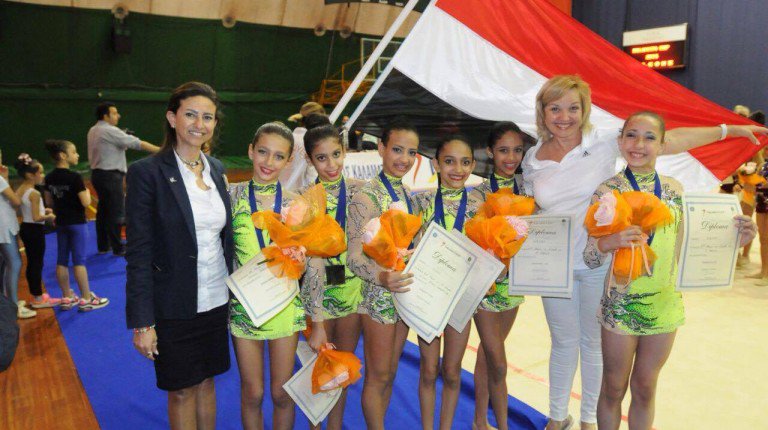 Egyptian female gymnasts have recently been making leaps and bounds in the competitive arena.
Egyptian female gymnasts have recently been making leaps and bounds in the competitive arena.This year, Sherine El-Zeiny won gold at the African Gymnastics Championships in the women’s individual all-around competitions. She is part of the national team.
At the same tournament, the national girls’ gymnastics team won in the junior teams’ division. In the juniors’ individual all-around competitions, Farah Ahmed and Farah Said won gold and bronze, respectively.
The 3rd International Rhythmic Gymnastics Tournament in Kalamata, Greece was another chance for Egyptian gymnasts to prove themselves this year.
Under the leadership of coaches Sarah Ismail, Mayar Ragab, and Russian coach Aala, as well as ballet coach Hany Hassan, the Egyptian girls’ team won two silver medals in both junior divisions: individual all-around and teams.
Farida Nadir, Tia Dia, Nermine Khaled, Malak El-Sherif, Salma Khaled and Yara Ihab make up the national girls’ team.
Another Egyptian gymnast, Mariam Selim, placed fifth in the individual all-around division at the tournament.
President of the Egyptian Gymnastics Federation Alaa Hamed and the head of its Technical Committee Noha Abdel Wehab showed their complete support and appreciation to the Egyptian gymnasts.